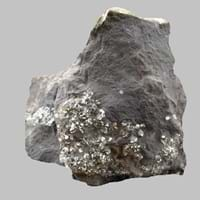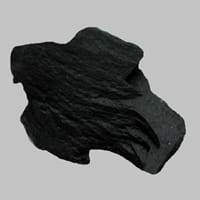Definition
Argillites are highly compact sedimentary or slightly metamorphosed rocks that consist largely or wholly of particles of clay or silt but lack the fissility of shale or the cleavage characteristic of slate
Lignite is a soft brownish coal which shows traces of plants and is intermediate between bituminous coal and peat
Discoverer
Unknown
Unknown
Etymology
From Latin Argilla (clay) and -ite in English which became agrilla+ -ite = Argillite
From French, Latin lignum wood + -ite1
Class
Sedimentary Rocks
Sedimentary Rocks
Sub-Class
Durable Rock, Soft Rock
Durable Rock, Soft Rock
Group
Not Applicable
Not Applicable
Other Categories
Fine Grained Rock, Opaque Rock
Coarse Grained Rock, Fine Grained Rock, Medium Grained Rock, Opaque Rock
Texture
Clastic, Polished
Amorphous, Glassy
Color
Dark Grey to Black, Pink, Red, White
Black, Brown, Dark Brown, Grey, Light to Dark Grey
Durability
Durable
Durable
Appearance
Rough and Dull
Veined or Pebbled
Interior Uses
Decorative Aggregates, Homes, Interior Decoration
Not Yet Used
Exterior Uses
As Building Stone, Garden Decoration, Office Buildings
Not Yet Used
Other Architectural Uses
Curbing, Whetstones
Not Yet Used
Construction Industry
Used for flooring, stair treads, borders and window sills.
for Road Aggregate, Steel Production
Medical Industry
Not Yet Used
Not Yet Used
Antiquity Uses
Artifacts, Monuments, Sculpture
Not Yet Used
Commercial Uses
Fire resistant, Used to manufracture paperweights and bookends
Electricity Generation
Types
Not Available
Xyloid Lignite or Fossil Wood and Compact Lignite or Perfect Lignite
Features
Is one of the oldest rock
Generally rough to touch, Helps in production of Heat and Electricity, Used as fossil fuel
Archaeological Significance
Monuments
Used
Not Yet Used
Famous Monuments
Data Not Available
Not Applicable
Sculpture
Used
Not Yet Used
Famous Sculptures
Data Not Available
Not Applicable
Figurines
Used
Not Yet Used
Formation
An argillite is a fine-grained sedimentary rock mainly composed of clay particles which forms from lithified muds which contain variable amounts of silt-sized particles.
Coal formation takes place due to accumulation of plant debris in a swamp environment. The Coal formation process continues, as peat turns into lignite brown or black coal at increasing heat and pressure.
Mineral Content
Biotite, Chlorite, Feldspar, Micas, Muscovite or Illite, Plagioclase, Pyrite, Quartz
Not Available
Compound Content
Iron(III) Oxide, Potassium Oxide, MgO, Silicon Dioxide
Carbon, Hydrogen, Nitrogen, Oxygen, Sulphur
Types of Metamorphism
Not Applicable
Not Applicable
Types of Weathering
Biological Weathering
Biological Weathering, Chemical Weathering, Mechanical Weathering
Types of Erosion
Chemical Erosion
Chemical Erosion, Water Erosion, Wind Erosion
Grain Size
Fine Grained
Medium to Fine Coarse Grained
Fracture
Conchoidal to Uneven
Conchoidal
Streak
White to Grey
Black
Porosity
Highly Porous
Highly Porous
Luster
Waxy and Dull
Dull to Vitreous to Submetallic
Cleavage
Slaty
Non-Existent
Toughness
2.6
Not Available
Specific Gravity
2.56-2.68
1.1-1.4
Transparency
Opaque
Opaque
Density
2.54-2.66 g/cm3
800-801 g/cm3
Resistance
Heat Resistant, Impact Resistant
Heat Resistant
Deposits in Eastern Continents
Asia
Bangladesh, China, India, Russia
Bangladesh, Burma, Cambodia, China, India, Indonesia, Kazakhstan, Malaysia, Mongolia, Pakistan, Turkey, Vietnam
Africa
Ethiopia, Kenya, Morocco, South Africa, Tanzania
Botswana, Kenya, Morocco, Mozambique, South Africa, Tanzania
Europe
Austria, France, Germany, Greece, Italy, Romania, Scotland, Spain, Switzerland
Belgium, Bulgaria, England, France, Germany, Greece, Hungary, Kosovo, Netherlands, Norway, Poland, Romania, Serbia, Slovakia, Slovenia, The Czech Republic, Ukraine, United Kingdom
Others
Not Yet Found
Not Yet Found
Deposits in Western Continents
North America
USA
Canada, Mexico, USA
South America
Bolivia, Chile, Colombia, Ecuador, Peru, Venezuela
Brazil, Chile, Colombia, Venezuela
Deposits in Oceania Continent
Australia
New South Wales, New Zealand, Queensland, Victoria, Western Australia
New South Wales, Queensland, Victoria
Argillite vs Lignite Characteristics
Though some rocks look identical, they have certain characteristics which distinguish them from others. Characteristics of rocks include texture, appearance, color, fracture, streak, hardness etc. Argillite vs Lignite characteristics assist us to distinguish and recognize rocks. Also you can check about Properties of Argillite and Properties of Lignite. Learn more about Argillite vs Lignite in the next section. The interior uses of Argillite include Decorative aggregates, Homes and Interior decoration whereas the interior uses of Lignite include Not yet used. Due to some exceptional properties of Argillite and Lignite, they have various applications in construction industry. The uses of Argillite in construction industry include Used for flooring, stair treads, borders and window sills. and that of Lignite include For road aggregate, Steel production.
More about Argillite and Lignite
Here you can know more about Argillite and Lignite. The life cycle of a rock consists of formation of rock, composition of rock and transformation of rock. The composition of Argillite and Lignite consists of mineral content and compound content. The mineral content of Argillite includes Biotite, Chlorite, Feldspar, Micas, Muscovite or Illite, Plagioclase, Pyrite, Quartz and mineral content of Lignite is not available. You can also check out the list of all Sedimentary Rocks. When we have to compare Argillite vs Lignite, the texture, color and appearance plays an important role in determining the type of rock. Argillite is available in dark grey to black, pink, red, white colors whereas, Lignite is available in black, brown, dark brown, grey, light to dark grey colors. Appearance of Argillite is Rough and Dull and that of Lignite is Veined or Pebbled. Properties of rock is another aspect for Argillite vs Lignite. The hardness of Argillite is 2-3 and that of Lignite is 1. The types of Argillite are Not Available whereas types of Lignite are Xyloid Lignite or Fossil Wood and Compact Lignite or Perfect Lignite. Streak of rock is the color of powder produced when it is dragged across an unweathered surface. The streak of Argillite is white to grey while that of Lignite is black. The specific heat capacity of Argillite is 0.87 kJ/Kg K and that of Lignite is 1.26 kJ/Kg K. Depending on the properties like hardness, toughness, specific heat capacity, porosity etc., rocks are resistant to heat, wear, impact, etc.Argillite is heat resistant, impact resistant whereas Lignite is heat resistant.





